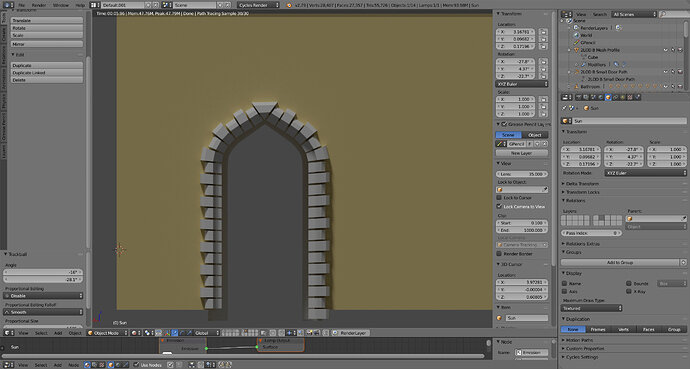I was perplexed a couple of times when nothing worked. Then I followed the usual check list:
-Are you in edit or object mode?
-Have you applied ALL of your transformations (on the curve, too)?
-Where is the point of origin? Does it need to be moved?
-Have you selected EVERYTHING? Do you need to deselect some vertices or press A to select all?
I tried this a couple of times to get better results and at least three times I forgot check if I had applied scale and rotation also to the curve. I don’t know why that is so easy to forget. I guess it is just too easy to think that the curve doesn’t need any attention, because it is not a mesh. Heh.
I added two extra vertices to the top of the path curve and once again changed the flat apex to a sharp one. Then I added the relative distance in the array modifier until the tiles were arranged pleasantly. At first I thought I might want to use the mirror modifier to get an even result but ultimately I decided that I liked this slightly wonky result better. I even got a corner piece!
My mind drew blank when I tried to think about other uses for this method so I just picked a random item (the bookshelf) and created a decoration for it. It looks a bit funny to me but at least I got the method working. I didn’t manipulate the curve handles even though that might have helped with the skewed distortion of the decoration piece. I needed to rotate (tilt) the curve and then I subdivided the whole thing. The decoration looked much better with more vertices in the curve the array modifier follows. 

Editing a bit. That decoration looks like some weird type of Christmas lights. So, that is what you could, for example, do with mesh-curve array. Christmas lights around the tree.


